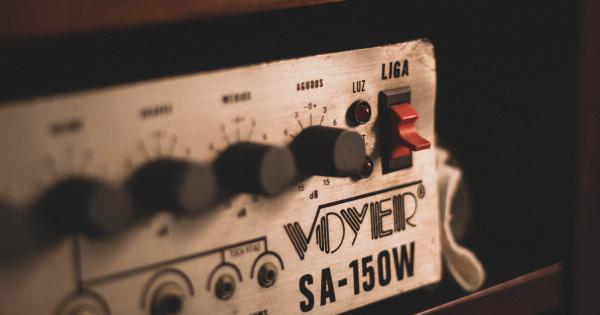Epilepsy is a neurological disorder caused by abnormal brain activity that leads to seizures. It affects more than 50 million people worldwide, making it a major public health concern.
While medication is the most common treatment option for epilepsy, non-pharmacological interventions can also be effective in managing the condition. In this article, we will discuss 10 non-pharmacological interventions for epilepsy.
Dietary Changes
Some dietary changes have been found to help reduce the frequency and severity of seizures in people with epilepsy. These include:.
- Ketogenic diet: A high-fat, low-carbohydrate diet that has been shown to reduce seizures in children with epilepsy.
- Modified Atkins diet: Another low-carbohydrate diet that has been found to be effective in managing seizures in children and adults with epilepsy.
- Gluten-free diet: Some studies suggest that a gluten-free diet may help reduce seizures in people with celiac disease or non-celiac gluten sensitivity.
Neurofeedback
Neurofeedback, also known as EEG biofeedback, is a type of therapy that uses real-time displays of brain activity to teach people how to regulate their brainwaves. It has been found to be effective in reducing seizures in people with epilepsy.
Acupuncture
Acupuncture is a traditional Chinese medicine practice that involves inserting thin needles into specific points on the body to promote healing.
Some studies have shown that acupuncture may help reduce the frequency and severity of seizures in people with epilepsy.
Yoga
Yoga is a mind-body practice that involves physical postures, breathing exercises, and meditation. Some studies have suggested that regular yoga practice may help reduce the frequency and severity of seizures in people with epilepsy.
Meditation
Meditation is a mental practice that involves focusing one’s attention on a particular object, thought, or activity to achieve a state of mindfulness.
It has been found to be effective in reducing stress and anxiety, which can trigger seizures in people with epilepsy.
Music Therapy
Music therapy involves using music to promote healing and improve well-being. Some studies have suggested that listening to music or playing musical instruments may help reduce the frequency and severity of seizures in people with epilepsy.
Aromatherapy
Aromatherapy involves using essential oils extracted from plants to promote physical and emotional well-being.
Some studies have suggested that certain essential oils, such as lavender and chamomile, may help reduce the frequency and severity of seizures in people with epilepsy.
Art Therapy
Art therapy involves using art materials and creative processes to promote healing and improve well-being. Some studies have suggested that art therapy may help reduce stress and anxiety in people with epilepsy, which can trigger seizures.
Cognitive Behavioral Therapy
Cognitive behavioral therapy (CBT) is a type of talk therapy that helps people identify and change negative thought patterns and behaviors.
It has been found to be effective in reducing stress and anxiety in people with epilepsy, which can trigger seizures.
Physical Exercise
Physical exercise has been found to have a variety of benefits for people with epilepsy, including reducing stress, improving mood, and promoting overall health and well-being.
Some studies have also suggested that exercise may help reduce the frequency and severity of seizures in people with epilepsy.































